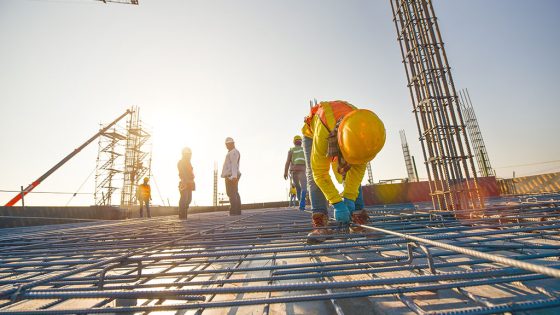Construction activity increased in March following six consecutive months of contraction, according to the latest Purchasing Managers’ Index (PMI) data.
The S&P Global survey, released today (5 April), found a slight rise to 50.2 in the month compared with 49.7 in February. Any reading above 50 shows an expansion.
This was its highest point since August 2023, when it hit 50.8.
Civil engineering was the best-performing industry sector. Increased work on infrastructure projects and resilient demand in the energy sector led the growth, S&P Global said in a statement.
The expansion of new jobs increased at its fastest pace for 10 months, it added, with anecdotal evidence suggesting a rise in new project starts and greater tender opportunities across the sector.
Subcontracting rates also increased at their fastest pace since August 2023.
Aecom head of cost management Brian Smith said: “The construction industry’s slump has thankfully stopped short of the seven-month mark, in time for more favourable weather conditions and with some of the financial pressures it has faced in recent times easing.
“With inflation continuing to fall, the Bank of England has opened the door to rate cuts anticipated in the next few months, easing finance costs which will boost the willingness of developers to push forward with paused projects.”
Yesterday, Construction News revealed that the number of construction-sector administrations is no longer increasing, with four fewer businesses going under in the first quarter of 2024 than in the same period in 2023.
On the other hand, Kelly Boorman, partner and national head of construction at auditor and consultancy RSM UK, predicted that insolvencies will “rise significantly in the coming months”, which could create supply-chain shortages as work picks up.
But she said that the data showed housebuilding activity had arrested its slump, with month-on-month activity not declining for the first time since November 2022.
“An increase in investment from funds and availability in mortgage products is set to stimulate the affordable housing market and drive volumes up, while larger educational and healthcare projects will also aid the recovery of the housing market,” Boorman said.
However, MHA partner Atul Kariya warned that the data was not a sign of sustained recovery and said conditions remain challenging, especially for housebuilding.
“To ensure a sustained recovery for the housing industry the basic fundamentals have to change. The lack of political stability, relatively high corporation tax in comparison with competitors like Ireland, and the associated cost of capital in the UK are making it a less favourable option for real estate investors,” he said.
“The next government, of whatever political persuasion, needs to set out a five-year plan to support the industry and make the UK attractive to investors once again.”

